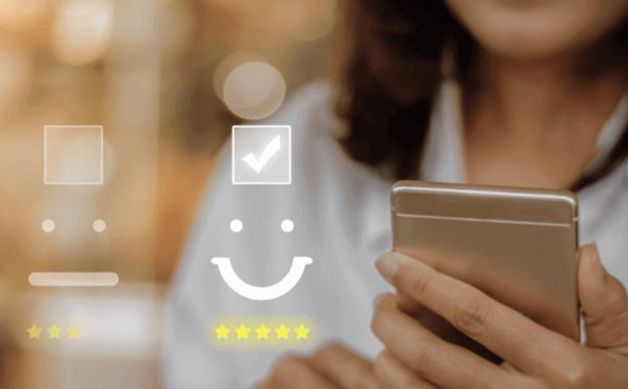Going beyond Net Promoter Scores & CSAT: CX for Customer Retention
Retaining customers with exceptional CX
Businesses grow by acquiring new customers, but they thrive by keeping their existing ones happy. Businesses need to put in the effort to retain current customers. Doing so can be even more important than acquiring new ones. When starting a new business, getting those first few customers can be a liberating experience. Moreover, all companies strive to attract new customers as well as new businesses. Yet, they tend to overlook customer retention, which is a significant core strength of any business.
Acquiring new customers can cost five to 25 times as much as retaining one.
Don’t make the mistake of thinking they’re the “same” customers. They’ve changed. Businesses that are on the pulse of those changes by proactively listening are better poised to adapt, innovate, survive, and serve. Make calls to key customers. It’s even more important now than it usually is to listen and respond to concerns quickly.
By using retention strategies, a brand will be able to better engage with customers and keep them happy. It’s not just marketers who look at churn. Many investors will use CX metrics to evaluate the underlying health of a firm. The higher the churn rate, the more they question the company’s viability.
Importance of CX metrics for customer retention across industries
It’s more comfortable and less expensive to retain customers than to acquire them. For one thing, businesses will spend five times less money on customer retention. Now consumers want it all, they are more knowledgeable about the products they use and demand value-added, personalized service in real-time, using voice, text-based media like email, chat, and social media. In fact, they won’t even hesitate to switch providers if they don’t find what they’re looking for.
Even in industries where satisfaction is comparably high, loyalty levels are failing. And thanks to social media, the ultimate medium for word-of-mouth communication, individuals switching decisions can have rapid and widespread consequences. Given the rate of growth these days consumers have for anything or everything they buy, has led to the importance of understanding how critical is customer experience for a product to not only grow but also to nurture its customers.
Did you know that repeat customers spend around67% more than newer customers, converting someone who has never bought from you before?
Between customer expectations and the services they receive, there is a huge gap. They use mediums such as social media to share their experiences and multiply their reach which could cost brand reputation.
Why are customer retention services important for your business?
Segmentation for greater customer retention
The strategy behind customer segmentation involves using the data that you’ve collected on your customers, including the information that they have provided, their general behavior on your website, the way they’ve engaged with you, and their purchase history, to divide them into different groups so that you can effectively target different groups within your targeted audience at a time.
For instance, if you sell pet food, then sending out publicity for new dog food to customers who only own dogs aren’t going to be an effective way to encourage them to make another purchase. If you’ve segmented your customers, you can send that same promotion to a customer that actually owns a dog or that has bought dog food in the past.
Customer segmentation patterns to give you an idea of how to leverage your customer data to segment your customer lists. For instance:
Demographics
You can collect customer demographic information via surveys and opt-in forms. This information can be helpful for segmentation for a number of reasons. For instance, if your business sells a product that comes in an affordable model as well as a luxury model, knowing which customers fall within a high household income bracket will be helpful. Additionally, the way you engage with your leads may differ depending on their age. Certain types of messaging will appeal more to college-aged adults than senior citizens, for example, and they will likely have different pain points as well.
Geographic location
Segmenting your customer list based on where they live can be very helpful for a number of reasons. First off, you may have a store-specific advertisement. If you have multiple locations throughout the country or throughout the country, then you’ll want to make sure you’re targeting customers that can actually take advantage of it. Besides, you may have products or services that are specific to certain parts of the country. For instance, you may sell heavy-duty winter clothing. Even if you’re an E-commerce, targeting customers who live in warm climates where it doesn’t snow will be ineffective.
Purchase patterns
Knowing when your customers are making their purchases and what they are purchasing can help you segment them into groups that you can target to improve sales even more. For example, some shoppers may be hesitant and may regularly leave products in their shopping carts without checking out. You could send them a special offer or discount code to help encourage them to see the purchase through. Grouping together customers based on when they make their purchases on the weekend, in the evenings, on certain holidays, etc. These little things can help you time your interactions more effectively as well.
Device used
Tracking what devices your customers used to make purchases or to view products can be helpful in providing the right offers at the right times. For instance, customers who are using mobile devices, such as smartphones or tablets, to make purchases are most likely doing it away from work since most people who browse during work hours do so on their computers.
These are just a few ways that you can implement customer segmentation to improve your ability to engage with existing customers using the data you’ve collected from them. Successful customer segmentation will greatly improve your marketing efforts as a result.
Boost customer retention with Maxicus
Customer retention pro tips:
Businesses thrive to keep their customers happy and here are some guidelines to help you accomplish that:
Build a customer database
Collect information about your customers i.e what products and services they’re interested in, what their buying and spending habits are, what contact they’ve had with you, whether they’ve had any problems or complaints, whether they’ve referred any new customers to you, and any other information relevant to your business.
The more you know about your customers, the more effective your communication with them will be, and the easier it is for you to identify different customer segments, and see who your most important customers are.
Keep in touch
Stay present in the minds of your customers by giving them information that they’d find interesting and relevant. Email newsletters are a good way of providing regular updates, like details on special offers or promotions.
Consider sending targeted newsletters to different customer segments and to your key customers, which can help to build relationships. Customers appreciate when you make an effort to know what they’re interested in and keep your messages relevant.
Offer multiple customer touchpoints
Think beyond just answering your phone and responding to emails, and consider expanding into platforms like social media and daily messaging apps, chatbots, etc.
A good way to choose new communication channels is to run a poll on your website, newsletter, or brand page to ask your customers which platforms they prefer so that you can ensure you’re focusing your efforts in the right places.
Target your most valuable customers
The 80-20 rule states that 80% of your business comes from 20% of your customers.
It makes sense to specifically target promotions and special offers to customers who are likely to generate the best returns. The more of your marketing budget you put towards promotions with higher ROI, the larger the return will be.
That doesn’t mean you should ignore the other 80% of your customers though! Provide great value and service to all customers, while concentrating marketing dollars where they’ll do the best.
Recognize customer loyalty
Thank customers for choosing you over your competitors and for referring their friends and colleagues to you. There are many ways you can do this, ranging from a personal thank-you phone call or message, right through to a finder’s fee, or a full-blown loyalty program with rewards and cash prizes.
You are four times more likely to close business with an existing customer than you are with a new prospect. So reward the customers that stick with you.
Treat customer complaints as quality feedback
Most customers who are unhappy don’t complain, they simply walk away. When someone takes the time and effort to complain, they’re giving you the chance to fix things. Tell them that you take these issues seriously, get them to explain the problem, and ask them how you can fix things.
Resolve issues as quickly as possible. If you’re able to do this well, you can often turn the customer around so that they become a strong advocate for your business. In brief, you should treat your customers the way they want to be treated.
Ensure exceptional customer experiences
Develop a company culture where everyone sees customer service as a priority. Listen to what your customers have to say and then respond. Make customers feel that they’re receiving individual attention and not that you’re just following a script.
Ensure that your Customer Support team is properly trained to assist customers and has the resources and freedom to address their issues promptly. First impressions are extremely important. Customers often make their decision whether to buy from your company within the first few seconds—make sure every experience they have with your business is a good one.
Retaining customers is a balancing act
There are many customer retention strategies, but there are no shortcuts. You can’t cut a personal relationship that easily, so why should we assume business relationships are any different?
The strategies above can give you some fresh ideas for maximizing customer retention, but they’re not the ultimate. Your product and customer service will do most of the heavy lifting in keeping customers loyal, and there are no shortcuts for that.










